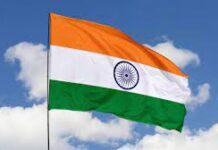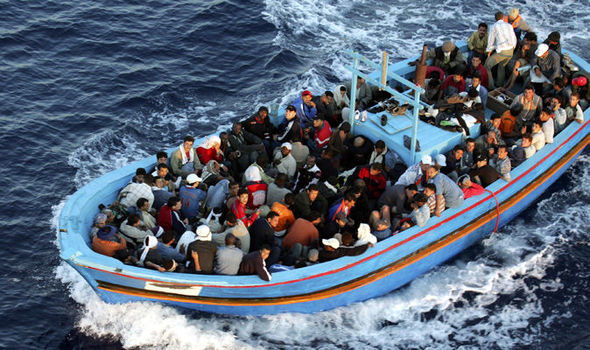Migrant smuggling and human trafficking are two interconnected issues that have plagued the world for years, causing untold suffering and misery to millions of people. The United Nations Office on Drugs and Crime defines human trafficking as “the recruitment, transportation, transfer, harboring or receipt of persons by means of threat, use of force or other forms of coercion, abduction, fraud, deception, the abuse of power, or a position of vulnerability to achieve the consent of a person having control over another person for the purpose of exploitation.”
On the other hand, migrant smuggling refers to the facilitation, for financial or other material benefit, of the illegal entry of a person into a state of which the person is not a national or resident.
In simple terms, migrant smuggling is the act of moving people across borders illegally, while human trafficking is the exploitation of these people. Many stories about the trafficking of brides, forced prostitution and organ harvesting have proliferated in the recent past.
According to the Global Slavery Index 2021, an estimated 3.19 million people are living in modern slavery in Pakistan. The United States Department of State’s Trafficking in Persons Report 2021 notes that Pakistan does not fully meet the minimum standards for eliminating trafficking, but the government is making significant efforts to do so. The majority of human trafficking victims in Pakistan are women and children who are exploited for sexual and labour purposes. In 2020, FIA reported a significant increase in human trafficking cases, with 413 cases registered, compared to 204 cases in 2019.
According to a 2020 report by the United Nations Office on Drugs and Crime (UNODC), the most common form of human trafficking in Pakistan is for forced labour, particularly in the brick-making, agriculture, and domestic work sectors. The International Labor Organization (ILO) found that child labour is prevalent in Pakistan, with an estimated 12.5 million children between the ages of 5 and 14 engaged in work. Many of these children are vulnerable to exploitation and abuse, including human trafficking and smuggling. The International Organization for Migration (IOM) reported that in 2019, it assisted 14,725 Pakistani migrants who were stranded or in distress in various countries, with the highest number in Iran, followed by Saudi Arabia and Oman.
The smuggling of migrants is a significant problem in Pakistan, particularly along the Pakistan-Iran border. According to a 2020 report by the UNODC, smugglers charge up to $10,000 per person to take them from Pakistan to Europe or North America.
The issue of unemployment and poverty in various countries has created a vulnerable population susceptible to human trafficking and smuggling. This situation is exemplified in Pakistan, where scores of individuals are crossing national borders through illegal routes due to the twin crises of rising inflation and unemployment. These individuals are often referred to as “economic migrants,” as they are seeking better opportunities and living conditions elsewhere. However, their desperation to leave the country exposes them to exploitation and abuse by human traffickers and smugglers who take advantage of their precarious situations.
A disturbing trend of Pakistani girls being trafficked to China under the guise of fake marriages and employment has also emerged. Shockingly, these innocent victims are being lured by deceitful Chinese grooms and matchmaking agencies, only to be sold into the black market of sex and organ transplants. It’s crucial for the media to clearly distinguish between smuggling and trafficking and sensitize the public on this issue. Journalists and academia should be trained to understand the difference between “human smuggling” and “human trafficking.” The key distinction lies in freedom of choice: smuggling involves a person willingly entering into an agreement to gain illegal entry into a foreign country, while trafficking involves coercion and exploitation.
In addition, there is a need for increased public awareness campaigns to sensitize the masses on the realities of migrant smuggling and human trafficking. Such campaigns should focus on the causes and consequences of these activities, the signs of exploitation, and the importance of reporting any suspected cases to law enforcement agencies.
The FIA has already developed a ‘National Action Plan against Trafficking in Persons and Smuggling of Migrants’ (2021–2025) which aims to promote the detection of trafficking in persons and smuggling of migrants, improve the position of victims and intensify the enforcement of criminal liability
As such, addressing this problem requires a coordinated global response that tackles its root causes. This response should involve governments and international organizations working together to provide better job opportunities, social safety nets, and education programmes, which can help people break out of the cycle of poverty and avoid becoming victims of trafficking and smuggling.
Raising awareness about the dangers of human trafficking and smuggling is also essential in preventing this problem. This can be achieved through education programmes, media campaigns, and community outreach initiatives. Media can also highlight the warning signs of trafficking and smuggling, such as false job offers, fake marriages, or being transported in cramped spaces. Additionally, support and protection should be provided to victims of trafficking and smuggling. This can include access to legal services, healthcare, and safe housing.
Governments must also strengthen their laws and law enforcement capabilities to prevent and prosecute trafficking and smuggling offences. This should involve harsher penalties for traffickers and smugglers and increased efforts to hold those responsible accountable for their actions. Furthermore, collaboration between countries is necessary to combat transnational trafficking and smuggling networks, which often involve multiple countries.
Migrant smuggling and human trafficking are not just issues affecting developing countries; they are global problems. Every year, thousands of people are trafficked or smuggled across borders, with many falling victim to horrific abuse, forced labour, and sexual exploitation. The existence of trafficking routes is often linked to terrorism and drug routes, making it easy to move illegal drugs and proceeds of crime without any traceable footprint.
One of the biggest challenges facing efforts to tackle migrant smuggling and human trafficking is the lack of cohesion among various law enforcement agencies. Different agencies may have different mandates, work in silos, or lack adequate resources to address the problem effectively. This lack of coordination leads to gaps in the response, with many victims falling through the cracks. For instance, a person may be rescued from a trafficking ring but not provided with adequate support to help them recover from their ordeal.
Another major obstacle is the absence of reliable data. Human trafficking and migrant smuggling are illegal activities, making it difficult to obtain accurate statistics on the number of victims and the scale of the problem. This lack of data hinders efforts to develop effective interventions and allocate resources where they are most needed.
Furthermore, the insensitivity among the masses towards migrant smuggling and human trafficking remains a major barrier to combating the problem. Many people view migrants and refugees as a threat to their security and livelihoods and fail to recognize their vulnerability to exploitation. This lack of empathy perpetuates a cycle of abuse and exploitation, making it difficult to address the root causes of the problem.
To effectively combat migrant smuggling and human trafficking, it is important to adopt a multidisciplinary approach that involves all stakeholders. This approach should involve coordination among different law enforcement agencies, the development of reliable data collection and reporting mechanisms, and the provision of adequate resources to support victims.
In addition, there is a need for increased public awareness campaigns to sensitize the masses on the realities of migrant smuggling and human trafficking. Such campaigns should focus on the causes and consequences of these activities, the signs of exploitation, and the importance of reporting any suspected cases to law enforcement agencies.
It is only through collective efforts that we can put an end to the suffering and misery caused by migrant smuggling and human trafficking.























